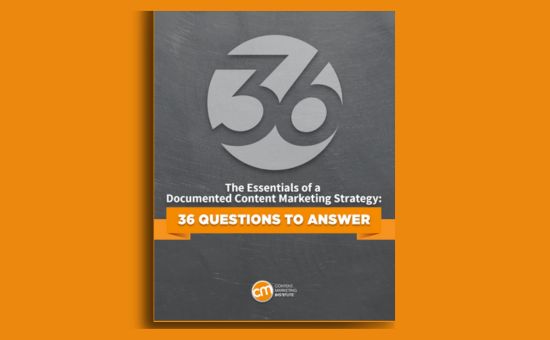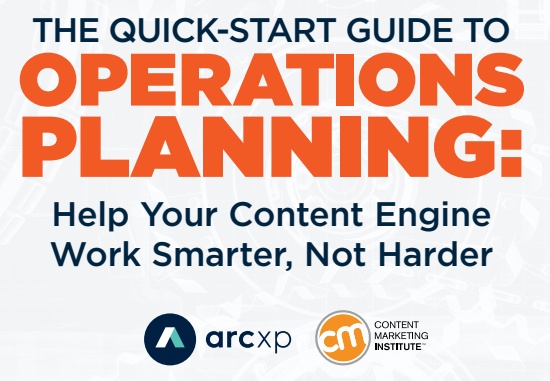Content Marketing Writing Secrets: Better, Stronger, Faster | Content Marketing Institute
Content Marketing
Becoming adept at content marketing writing is a journey of refinement, not an instant fix. While there’s no magic formula or technology to effortlessly transform drafts into captivating content, continual improvement is achievable.
This guide, compiled by seasoned marketers, offers systems, exercises, and insights to enhance your storytelling, streamline creativity, and amplify the impact of your marketing language. With diligent practice, you can elevate your content marketing writing to be more compelling, impactful, and efficient.
The Basics: Make It Easy
Let’s face it: Audience-friendly content is a must. While there are no groundbreaking revelations here, this section offers valuable pointers to streamline the reading experience. These tips focus on:
- Structure for easy reading
- Make smart word choices
- Create a shared understanding
- Write to drive action
STRUCTURE FOR EASY READING
MAKE SMART WORD CHOICES
- Avoid qualifiers and superlatives; they can backfire.
- Opt for an active voice to engage readers more effectively.
- Eliminate fluff such as buzzwords and clichés for clearer communication.
CREATE A SHARED UNDERSTANDING
- Utilize comparisons to explain complex ideas by relating them to familiar concepts.
- Tailor your language to match that of your audience by incorporating their vocabulary.
- Pose occasional rhetorical questions to engage readers’ critical thinking without overdoing it.
WRITE TO DRIVE ACTION
Everything You Need to Know to Write Faster
When writing professionally, time is precious. Learn to write efficiently with these strategies:
- Set up for success
- Organize your research
- Schedule time to write (and to finish)
- Minimize distractions
- Resist the urge to edit
- Start at the top
- Build your structure
- Refine your work
- Sweat the headline, lede, and conclusion
- Work the system
SET UP FOR SUCCESS
Having a clear direction speeds up the writing process. Prepare beforehand by following these steps:
- Set up a Word or Google document titled “(TOPIC NAME) – NOTES” for your research.
- Outline key questions:
- Who is the target audience?
- What is the intended takeaway?
- How will the content be presented?
- Where will it be published?
- Why is the content being created?
- How will success be measured?
Tip: Create a template for easy reference each time you begin a new piece.
ORGANIZE YOUR RESEARCH
Begin by identifying and labeling your resources clearly at the outset of your document or section. For individuals, include their name, title, and company; for online sources, provide the URL. Ensure the format aligns with how you intend to present the information in the article for easy copy-pasting into your draft.
Next, review your notes and highlight significant quotes or insights using features like bolding or asterisks. If including backlinks or social handles from your sources, list them accordingly. Organize your notes with subheads, grouping related content under each subhead and noting the source for each item.
SCHEDULE TIME TO WRITE (AND TO FINISH)
Allocate dedicated time slots on your calendar for writing your article. This method ensures that writing isn’t relegated to a low-priority task and communicates to colleagues your commitment to writing during those periods. Additionally, schedule a call or another task immediately following your writing session to create a sense of urgency and impose a deadline, motivating you to focus and complete the task efficiently.
Minimize distractions
Resist the urge to edit
When you begin writing, revisit your responses to the audience and brand questions to reiterate the article’s objective. To expedite your writing process, avoid overthinking and focus on drafting without hesitation. If dissatisfied with a word choice, proceed forward. Instead of waiting for elusive creative inspiration for the ideal opening, recognize that perfection is unattainable, and improvement stems from existing content. If uncertain about a source’s title, mark it with question marks for later clarification.
Start at the top
Begin by crafting three to five headlines that establish the tone and direction of the piece. Don’t worry about incorporating keywords or ensuring immediate reader engagement. Review your notes to pinpoint the most intriguing, valuable, or pertinent elements, which you can potentially integrate into your introduction.
If you encounter writer’s block, use a temporary placeholder like “This article is about (TOPIC) because you are interested in the topic and will learn (XYZ).” You can refine it later. Incorporate a nut graph—a brief description of why the audience should be informed about this story—at the outset of the introduction.
Build your structure
Examine the subtopic subheads outlined in your notes or establish them at this stage. Evaluate whether these subheads encapsulate the essential themes that the article should explore. Consider the coherence of their sequence within the narrative.
It’s crucial to invest time in this phase to ensure accuracy. Subheads serve as the framework for your content. A well-defined structure prevents you from scrambling to organize your narrative effectively. Proceed to populate the sections beneath each subhead with the pertinent information gathered from your resources.
Refine your work
Now that you’ve finished your draft, transition to editing mode. Review the content following the introduction and consider the following:
- Does the article flow logically as a cohesive whole? Do the sections transition smoothly?
- Can more precise or vivid language evoke emotions effectively?
- Are the verbs dynamic and engaging?
- Is the text easily comprehensible and digestible?
Sweat the headline, lede, and conclusion
Now, it’s time to refine your headline and introduction to align with the article’s tone, flow, and narrative while captivating the reader’s interest. Ensure they accurately represent the content. If none of your initial headlines meet these criteria, generate additional options. Craft or refine your conclusion to complement the new headline and introduction, connecting back to the beginning. Summarize the main points and guide the reader toward the next step logically.
Work the system
Writer’s block, delays, and missteps are inevitable in the writing process. However, instead of waiting for inspiration, embrace this system to regain control. The more you practice, the more proficient and efficient you’ll become.
Keep enhancing your writing skills and download the complete guide to unlock more valuable insights! Click here to continue reading and get your copy now.
The Table of Contents of “Content Marketing Writing Secrets: Better, Stronger, Faster” Guide:
- The Basics: Make It Easy
- Everything You Need to Know to Write Faster
- Ledes With Strength
- 10 Exercises to Make Your Writing More Powerful
- Keep Your Skills Sharp
Number of Pages:
- 52 pages
Pricing:
- Free






